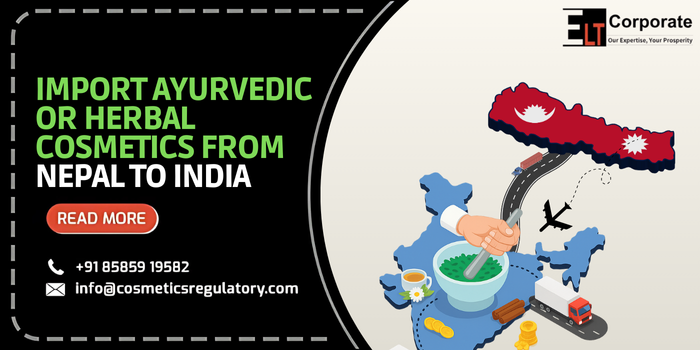The demand for Ayurvedic and herbal cosmetics is booming throughout India, in which Nepal is emerging as a promising supplier due to its traditional yogas and natural ingredients. However, to import these products to India requires strict compliance with the Standards Control Organization of Central Drugs (CDSCO) and, in some cases, the Ministry of AYUSH.
This guide suggests that documents are required to import herbal or Ayurvedic cosmetics from step-by-step Nepal to India, and general disadvantages to avoid.
Classify the Product Correctly – Cosmetic or ASU Drug?
Before starting, identify whether your product will be regulated as a cosmetic or as an Ayurveda, Siddha, Unani (ASU) drug: Cosmetic (CDSCO Regulation):
If the product has to clean, beautify, improve appearance, or protect the skin/hair (eg, Ayurvedic face cream for herbal shampoo, glow).
- ASU Drug (AYUSH Regulation):
If the product claims therapeutic/medicinal benefits (eg, “treats acne with Ayurveda,” “cures skin infection”). These are under AYUSH licensing rules.
Also read: License For Herbal Products
Regulatory Path for Importing as Cosmetics
Most herbal beauty products fall under cosmetics. If so, follow these steps:
Import registration (COS-2 Certificate)
- Apply on the CDSCO Sugam portal in Form COS-1.
- The importer (Indian unit), manufacturer, or its authorised agents in India can apply.
- Once given, the COS-2 import registration certificate is permanently valid, with a retention fee every 5 years.
Necessary documents:
- Power of Attorney/Authority Letter (duly notarised) from the manufacturer.
- Free sales certificate from the Nepali Authority.
- Component list with % composition (compliance with 4707 standards).
- Factory manufacturing license and GMP certificate.
- Pack size, variants, artwork and product specifications.
Labelling and packaging rules
Imported cosmetics should meet the Cosmetics, 2020 and legal metros (Packaged Commodities) Rules, 2011.
Labels must show:
- Product name, manufacturer and importer details.
- Import Registration Certificate Number (RC Number).
- Component list (> descending order for 1%).
- Batch no., MRP, pure quantity, expiration date.
- “Use first” should be valid for at least 6 months at the time of import date.
Component and test restriction
- BIS standards must follow (4707 parts 1 and 2).
- No prohibited/restricted materials.
- India banned the import of animal-derived cosmetics.
Import under AYUSH (ASU Drug Category)
If the products make medical claims and are deployed as Ayurvedic drugs, they will be regulated under Ayush.
The requirements include:
- Licensing under Rule 158B of the Drugs and Cosmetics Rules.
- Evidence of formulation based on official Ayurvedic texts.
- Compliance with AYUSH labelling criteria.
- Approval from the Ministry of AYUSHis is required before imports.
This route is more complex than cosmetics imports.
Customs and trade compliance
Despite the classification, you should also comply:
- IEC from DGFT (importer exporter code).
- Icegate/E-Sanchit registration for digital customs filing.
- Legal Metrology Elimination Registration (LMPC) for retail packs.
- Precious duties under SAFTA: Since Nepal is a SAARC member, you can avail low customs by submitting original certificates.
General disadvantage of escaping
- When they are cosmetics, they misunderstand products as “herbal medicine”.
- Using restricted/prohibited materials.
- Missing importer details or RC number on label.
- Importing products with a shelf life of less than 6 months.
- Failed to register with legal metrology for LMPC.
Accelerated checklist
- Products → classify cosmetic (CDSCO) or ASU (AYUSH).
- Get COS-2 import registration (if cosmetic).
- Prepare obedient labels (cosmetics rules, LMPC).
- Ensure 6+ months shelf life in imports.
- Avoid animal-defrauded cosmetics.
- Arrange for IEC, LMPC, and COO (for SAFTA).
Conclusion
Implementing Ayurvedic or herbal cosmetics from Nepal to India can unlock exciting business opportunities, but only when you strictly follow CDSCO and AYUSH rules. The classification of your product is the most important first step – Australians enjoy a relatively straightforward process, while medical Ayush products require a different, wider passage.
In ELT Corporate, we help businesses ensure comfortable imports by handling COS-2 applications, AYUSH approval, LMPC registration and customs documentation.



